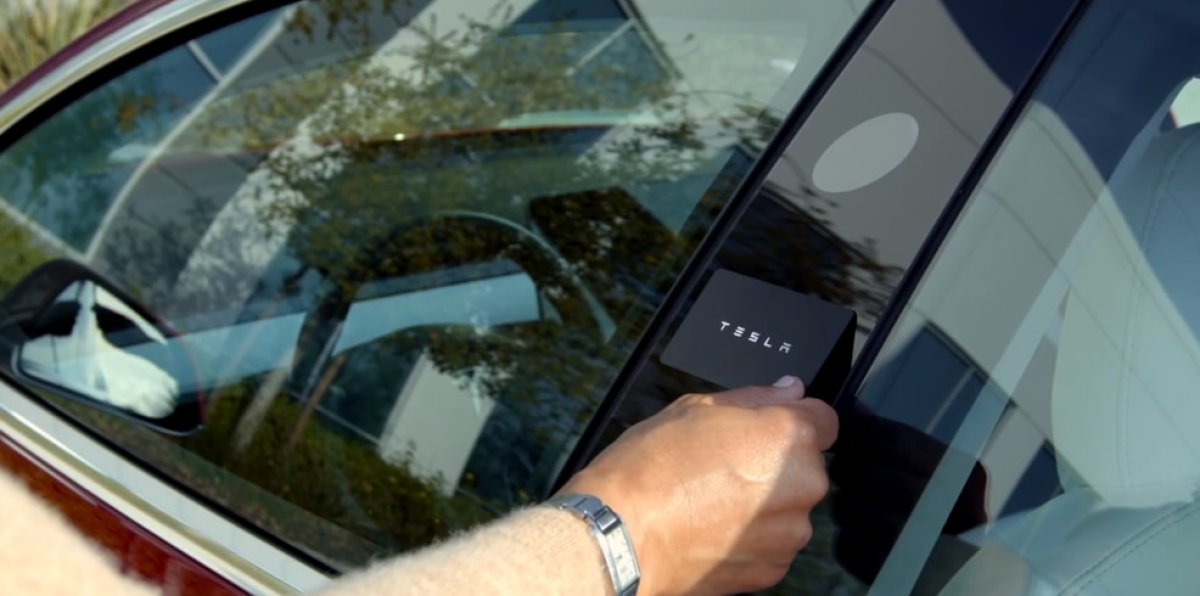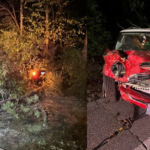A change in Tesla’s official owner’s manual suggests a long-included standard feature may soon become an optional accessory.
Specific text that guarantees the inclusion of two key cards with every new vehicle has been removed from the manuals for both the Model 3 and Model Y following a recent update.
Tesla provides the same owner’s manual for all editions of the Model 3 and Model Y, so it’s not clear exactly which models this will affect, but it seems that it’ll at least affect the new Standard, more affordable models.
The owner’s manual has removed various phrases that hint at key cards no longer being standard issue. In the Key Card section of the manual, Tesla has removed this phrase: “Tesla provides you with two Model 3/Y key cards, designed to fit in your wallet.”
The deletion of this note, timed just ahead of the launch of the de-contented Standard trims, strongly implies that new buyers of these lower-cost models will no longer receive the physical key cards in the vehicle pickup package on delivery day.
Since the introduction of Model 3 in 2017, Tesla has provided credit-card-sized key cards as part of the delivery package. While the Phone Key is the primary, seamless method of entry for most owners, the key card serves as an essential backup for situations where the phone is dead, lost, or when you need to let someone else access the vehicle.
With this change, any affected vehicles must be accessed using the Tesla app and a smartphone.
While Tesla’s newest vehicles feature ultra-wideband hardware to make Phone Keys even more reliable, an owner can still be left locked out if their phone battery dies or they misplace their phone.
For owners of Android phones with NFC capabilities, your phone can double as an NFC key, enabling you to unlock your vehicle just like you would with a key card. That’s a fantastic little backup feature that isn’t too well-known.
If this change is confirmed, the key card would move from a standard-issue item to an optional accessory that must be purchased separately from the Tesla store, where a pair of key cards costs $40 USD. We’re not entirely sure what to make of this change. These key cards are a minimal cost to Tesla, yet they could leave an owner completely locked out and frustrated. However, Tesla needs to cut costs somewhere for these lower-priced vehicles.
While key cards are a minor cost in the grand scheme of a new car purchase, it’s another calculated decision by Tesla to reduce the base cost and included components of its new entry-level vehicles.
Use our referral code and get 3 months free of FSD or $1,000 off your new Tesla.
Another quarter, and another chance for Tesla’s dedicated investors to submit questions for the Q3 2025 Earnings Call. Tesla’s Q3 production and deliveries absolutely crushed expectations, and were pushed forward by an end-of-quarter rush to take advantage of the expiring US Federal EV Tax Credit.
There’s a lot to be excited about this quarter, with the recent launch of FSD V14 to early-access investors, the slowly expanding deployment of Robotaxi, to the launch of the affordable variants of the Model 3 and Model Y.
The questions this quarter reveal more of a focus on the 'when' and 'how' of Tesla's next phase of growth, with investors demanding more clarity on product timelines and the path to scaling autonomy.
Tesla is fully gearing up for its Q3 2025 Earnings Call, and questions must be submitted to Say no later than October 21 by 4 PM EDT. Below is a list of some of the currently top-voted questions.
What are the plans for new car models? Will Tesla build compact car models leveraging the unboxed Cybercab platform? Will Tesla build a traditional SUV and pickup truck in the Cybertruck platform?
What are the latest Robotaxi metrics (fleet size, cumulative miles, rides completed, intervention rates), and when will safety drivers be removed? What are the obstacles still preventing unsupervised FSD from being deployed to customer vehicles?
What are the present challenges in bringing Optimus to market, considering app control software, engineering hardware, training general mobility models, training task-specific models, training voice models, implementing manufacturing, and establishing supply chains?
What is the demand/backlog for Megapack, Powerwall, Solar, or energy storage systems? With the current AI boom, is Tesla planning to supply power to other hyperscalers?
Can you share the progress of Robotaxi expansion? What cities will be expected to have a Tesla Robotaxi fleet deployed by the end of this year?
Instead of trying to replace HW3 with HW4, why not give an equal incentive to trade in for a new vehicle?
Here are some other questions in the list that we’re particularly interested in hearing the answers to, even though they may not be at the top right now.
What’s going on with Tesla insurance? Will it still expand to states like NY?
How long until we see self-driving Tesla semi trucks? And could you see this technology replacing trains?
What is happening with Solar Roof? Is Tesla still focused on this project?
Does the Cybertruck’s limited or delayed performance of Full Self Drive signal challenges implementing FSD on alternative platforms, including licensing opportunities with other manufacturers?
The larger SUV market is booming in the US. When will we get a full-size SUV that competes with this market under $75K?
What other information can be shared about the upcoming HW3 upgrade? Who will be eligible for free? Will there be a paid upgrade? Is there an updated timeframe? What kind of hardware will be included, and how does it compare to HW4? (one of our questions)
What is the timeline for AI5 and AI6 deployment in our cars ? What features will be enabled in AI 5 and 6 ?
Questions and voting are conducted through Say, a third-party platform that validates share ownership. Once your ownership is verified, you can use your shares to vote, with your vote weight corresponding to the number of shares you hold. Submitting a question initially gives it votes equivalent to your number of shares.
You can vote and submit your questions through Say right here.
The deadline to submit and vote on questions via the Say platform is 4 PM EDT on October 21st.
The Earnings Call itself will take place on October 22, at 5:30 PM EDT (2:30 PM PT). Links to the live stream will be made available closer to the event. A recap of the key points will also be provided as usual, so stay tuned for that in the hours after the call.
Closely following the Earnings Call will be the Annual Shareholder Meeting, taking place on November 6 at 3:00 PM CT. Tesla has already opened up the sign-up process for the Shareholder Meeting, and if you’re interested, you can read more here.
Another upcoming feature has been discovered in Tesla’s 2025.38 software update. Well-known Tesla hacker Green has unearthed a new screen-sharing service, a feature that could one day allow a user to share their vehicle’s main screen for remote viewing and diagnostics.
Although the details are still scarce due to this being an early implementation, the most likely application for such a tool is for Tesla’s service department.
A remote screensharing feature could make managing customer concerns much easier for Tesla Service. It could allow a technician to see a driver’s screen in real-time during a support call.
This would be invaluable for diagnosing software bugs or guiding a user through menu options. If a user encounters a software glitch, they can authorize a screen sharing session, enabling a remote technician to observe the issue firsthand, verify software versions, and review error logs —all without the user needing to leave their location.
While logs are fantastic for diagnosing performance issues or errors, UI bugs can be significantly more challenging to identify without seeing them firsthand.
For vehicles operating on the nascent Robotaxi Network, Tesla can issue remote commands to get FSD unstuck. In the case of an error, viewing the on-screen visualization, as well as the vehicle cameras, could provide remote operators a way to quickly diagnose a Robotaxi and get it back on track – all with minimal interruption.
With any remote access feature, security is paramount. According to Green’s findings, the current, unreleased, and inactive version of the feature has some very basic security measures in place. When a screenshare session is initiated, a notification will appear on the car’s display to inform the occupants.
Access is secured by a static 4-digit PIN, which is auto-generated by the vehicle once per boot. This is the detail that raises the most questions. Since a 4-digit PIN has a limited number of combinations, much of the security is left up to how the service connects to a vehicle and who has access to it. We imagine there will also be a clear indicator when screen sharing is active, similar to the red border in Service Mode.
A vehicle’s main display contains a wealth of potentially sensitive information, including location, calendar appointments, contact information, and navigation history, making security a crucial aspect of the feature.
What Green found is still an early, unreleased, and non-public version of this screen-sharing feature. It is almost certain that before this service ever goes live to customer vehicles, Tesla will implement a more robust, multi-layered security system, likely involving end-to-end encryption and dynamic, one-time-use access codes, to ensure that both vehicle security and user privacy are protected.
See all the features included in Tesla’s latest update, version 2025.38.3.2.
Another quarter, and another chance for Tesla’s dedicated investors to submit questions for the Q3 2025 Earnings Call. T…
Another upcoming feature has been discovered in Tesla’s 2025.38 software update. Well-known Tesla hacker Green has unear…
Another subtle but significant change for the Model 3 and Model Y Standard trims has been discovered in the owner’s manu…
Following a tease from Tesla’s VP of AI, Ahok Elluswamy, earlier in the day, Tesla has begun rolling out another rapid p…
Tesla’s VP of AI, Ashok Elluswamy, is at it again — teasing the next version of Tesla’s FSD. In a post on X, Elluswamy s…
In the ongoing pursuit of fully autonomous vehicles, Elon Musk continues to push the boundaries, with Tesla once agai…
Take a look at features that Elon Musk has said will be coming soon.
Teslas have the ability to send and receive text messages. Any message you receive while connected to the car will disp…
Tesla completely redesigned their app with version 4.0 last year. Since then Tesla has been quickly iterating on its f…
The screen will go black for a short time. A star field will swiftly appear and zoom forward, closely resembling a jump …
Following a tease from Tesla’s VP of AI, Ahok Elluswamy, earlier in the day, Tesla has begun rolling out another rapid p…
Tesla’s VP of AI, Ashok Elluswamy, is at it again — teasing the next version of Tesla’s FSD. In a post on X, Elluswamy s…
TIME Magazine has officially recognized the 2012 Tesla Model S on its prestigious new list, the Best Inventions Hall of …
We’re here with another round of undocumented features, this time for Tesla update 2025.32, which has now been deployed …
The on-screen driving visualization is one of Tesla’s iconic features, providing drivers with a real-time view of how th…
For years, Santa Mode has been the undisputed king of Tesla’s visualization easter eggs, a charming feature that transfo…
Just days after the initial, highly anticipated rollout of FSD V14.1 to a small group of early-access testers, Tesla is …
Play and download some of the most popular sound clips to use as your Tesla’s lock sound.
See all the features included in Tesla’s latest update, version 2025.38.3.2.
Subscribe to our weekly newsletter












